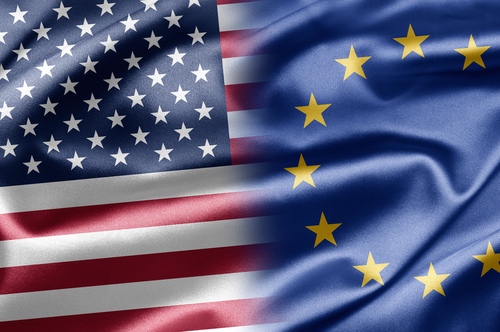

Summary
- The FTSE 100 has been the surprise outperformer in 2022, leading the S&P 500, the Stoxx Europe 600 and the Stoxx Euro 50 in 2021 by more than 10 percentage points.
- A primary reason is that the consumer staples and energy sectors are nearly 1/3rd of the FTSE 100, which benefited as investors dropped growth for value in early 2022 and energy prices surged.
- Analysts project European equity index earnings will decisively escape the past decade of little to no growth as economies reopen after Covid.
- But given the menacing macro background, with Russia and Ukraine at war, energy supplies under threat, and a recession on the horizon, we expect another disappointing year for European equities.
This article is only available to Macro Hive subscribers. Sign-up to receive world-class macro analysis with a daily curated newsletter, podcast, original content from award-winning researchers, cross market strategy, equity insights, trade ideas, crypto flow frameworks, academic paper summaries, explanation and analysis of market-moving events, community investor chat room, and more.
Summary
- The FTSE 100 has been the surprise outperformer in 2022, leading the S&P 500, the Stoxx Europe 600 and the Stoxx Euro 50 in 2021 by more than 10 percentage points.
- A primary reason is that the consumer staples and energy sectors are nearly 1/3rd of the FTSE 100, which benefited as investors dropped growth for value in early 2022 and energy prices surged.
- Analysts project European equity index earnings will decisively escape the past decade of little to no growth as economies reopen after Covid.
- But given the menacing macro background, with Russia and Ukraine at war, energy supplies under threat, and a recession on the horizon, we expect another disappointing year for European equities.
Market Implications
- European equities are cheap relative to projected earnings and may have little downside if earnings end up in the typical range of the past decade.
- European equities are vulnerable if earnings collapse or the EU and UK economies fall into recession.
- Medium term, the S&P 500 offers more upside.
Is the FTSE 100 for Real?
Have you looked at the FTSE 100 (UKX) lately? It is down a scant 1.5% YTD versus the S&P 500 (SPX), Stoxx Europe 600 (SXXP) and Euro Stoxx 50 (SX5E), which are down by double digits (Chart 1). But why is that? And will the outperformance continue?

What Is Behind the FTSE 100 Outperformance?
We offer three basic reasons for UK equity index outperformance: sector composition, lower beta, and a strong dollar.
Sector Composition
First and foremost is sector composition. The consumer staples and energy sectors – both strong performers in 2022 – dominate the UKX index, with a 31% share (Chart 2). Likewise, its share of the poorly performing consumer discretionary and technology sectors is only 7%, while the shares for the other indices are in the 20-40% range.

Lower Beta
A related reason is that the UKX is lower beta and lagged the other indices through most of the pandemic (Chart 3). In the initial selloff in March 2020, all four indices dropped by a similar amount, around 30%. By December 2021, the SPX had rallied 106%, and the SXXP and SX5E by 66%. But the UKX was up 42% and essentially flat versus December 2019. With less exposure to higher-beta companies, the UKX rallied less in 2021 but also fell less in 2022.

Strong Dollar
A third factor may be the strong dollar in 2022. The FTSE 100 has clearly risen as the USD appreciated 12.8% against pound sterling (Chart 4a). It contains various companies with exposure to other countries, and translating profits to sterling may have boosted UK profits and the indices.

However, many European companies also have a large foreign exposure, and the USD is up 11.3% against the euro. Yet there appears little FX benefit for the SX5E and SXXP indices (Chart 4b). Also, over time, correlation between currencies and the EU/UK equity indices has been sporadic.
In short, the differences in sector weightings probably accounts for most of the differences in relative performance of the UKX index versus SPX, SX5E and SPX indices. And it will likely continue to do so in coming months.
Where Is the Value?
The bigger question now is which of these indices offers the best value for equity investors? Equity index returns are closely linked to earnings growth. Therefore, we compare the index trend to trailing and forward earnings since 2000 where data is available (Charts 5a-d).

SPX Is a Growth Engine
This pattern is clear for the SPX index (Chart 5a). Note in particular, outside the financial crisis and 1H 2020, SPX earnings have mostly trended higher. Earnings flatlined during 2014-2015 due to a slowdown in technology earnings and a shakeout in the oil and gas industry when oil prices fell from near $100 to below $60. And the SPX followed. In our view, the selloff in 2022 was largely because equities got ahead too far ahead of earnings growth.
A Lost Decade (and More) for European Equities
The European indices exhibit quite a different pattern.
- Earnings have been flat for the SXXP and SX5E indices (Charts 5b and c) since 2010 even as the SPX EPS is up 83%. The UKX EPS has varied widely from up 20% to down 60% (Chart 5d) but is now near 2010 levels.
- To the extent the European indices have appreciated, it is mostly due to P/E multiple expansion, a consequence of negative interest rates that made earnings and dividend streams more valuable.
- Unlike the SPX, the European indices show a wide gap between trailing EPS and EPS for profitable companies. Translation – the European indices include more loss-making companies than the SPX.
- Forward earnings for the European indices are consistently much higher than trailing EPS for all three indices. And they are consistently well above positive trailing EPS for the SX5E and UKX indices. Still, while forward earnings are higher, they are roughly flat, implying expected little growth over time.
- Remarkably, the SX5E index is only 73% of its early 2000 level. As Chart 2 shows it is exposed to the vulnerable consumer discretionary and technology sectors..
- The SXXP is up a modest 12% since early 2000; the UKX is up 5%. The SPX is up 268% even with the 2022 selloff.
You can pick different time slices, but it is difficult to avoid the conclusion that European equity indices have suffered two lost decades.
Forward Earnings Are Impossibly Optimistic
All the more remarkable, then, is that forward earnings for all four indices show strong expected growth. For UK and EU indices, it is well above what they have achieved since the financial crisis (Charts 4a-d, Table 1). Even allowing for the distortions caused by the pandemic and assumptions that economies will normalise in the coming year, it is hard to see how earnings could spring so far above historical norms, especially in Europe, under any but the most optimistic scenario.

But you can hardly characterize any likely scenario in coming months as optimistic. The war may be between Russia and Ukraine, but Europe is effectively under siege via Russia’s threat to curtail or cut critical gas supplies completely. Inflation has spiked across the continent, prompting the ECB to raise its policy rate an unexpected 50 basis points recently. Recession is a growing risk. Heat waves and wildfires are causing economic and social dislocations weekly.
In short, barring a sudden cessation of Russian/Ukrainian hostilities and rapid dampening of inflation, the base case must now be that realised earnings in the coming year will come in far lower than current forward earnings projections – an all too familiar pattern.
Cheap but Not a Buy
Comparing the European indices to trailing earnings and especially forward earnings, they arguably look cheap. But that is only if you believe recent earnings growth is sustainable and can at least trend toward year-ahead projections (if not outright achieve those lofty levels).
- If EU and UK equities earnings come within the range of the past decade, these indices could have little downside from present levels even if projected earnings fall sharply later this year.
- The downside risks are another collapse in earnings due to ongoing uncertainties; or a recession arrives, making earnings weakness likely.
Leaving aside the unfolding bearish economic scenario, we do not see the underlying economic or social changes that might allow European equities to shake the past decade’s malaise and embark on a path of sustainable earnings growth. Indeed, we discuss in a recent note that Germany – the European economic powerhouse of the 2000s –needs to change its economic model if it is to maintain its dominant position. And the challenges of the Russian/Ukraine conflict and inflation may just end in more loss-making companies and a deeper hole.
SPX Has More Upside Over the Medium Term
The US is less exposed to the Russia/Ukraine conflict but faces an inflation problem and many social ills. In our view, the SPX is trading near fair value based on trailing and projected earnings, but we remain sceptical that EPS can grow 14.8% above trailing earnings in the coming year. We expect more widespread earnings weakness in 2H and further declines in the SPX, especially if a recession hits.
Looking ahead to a post-recession world of somewhat lower inflation, our base case now is the SPX will return to earnings growth and renewed gains.
We generally recommend an underweight position in equities at this time. The UKX may offer lower beta exposure and downside for now given its large consumer staples and energy weighting, but it is still exposed to the macro risks that threaten the UK and Europe.
